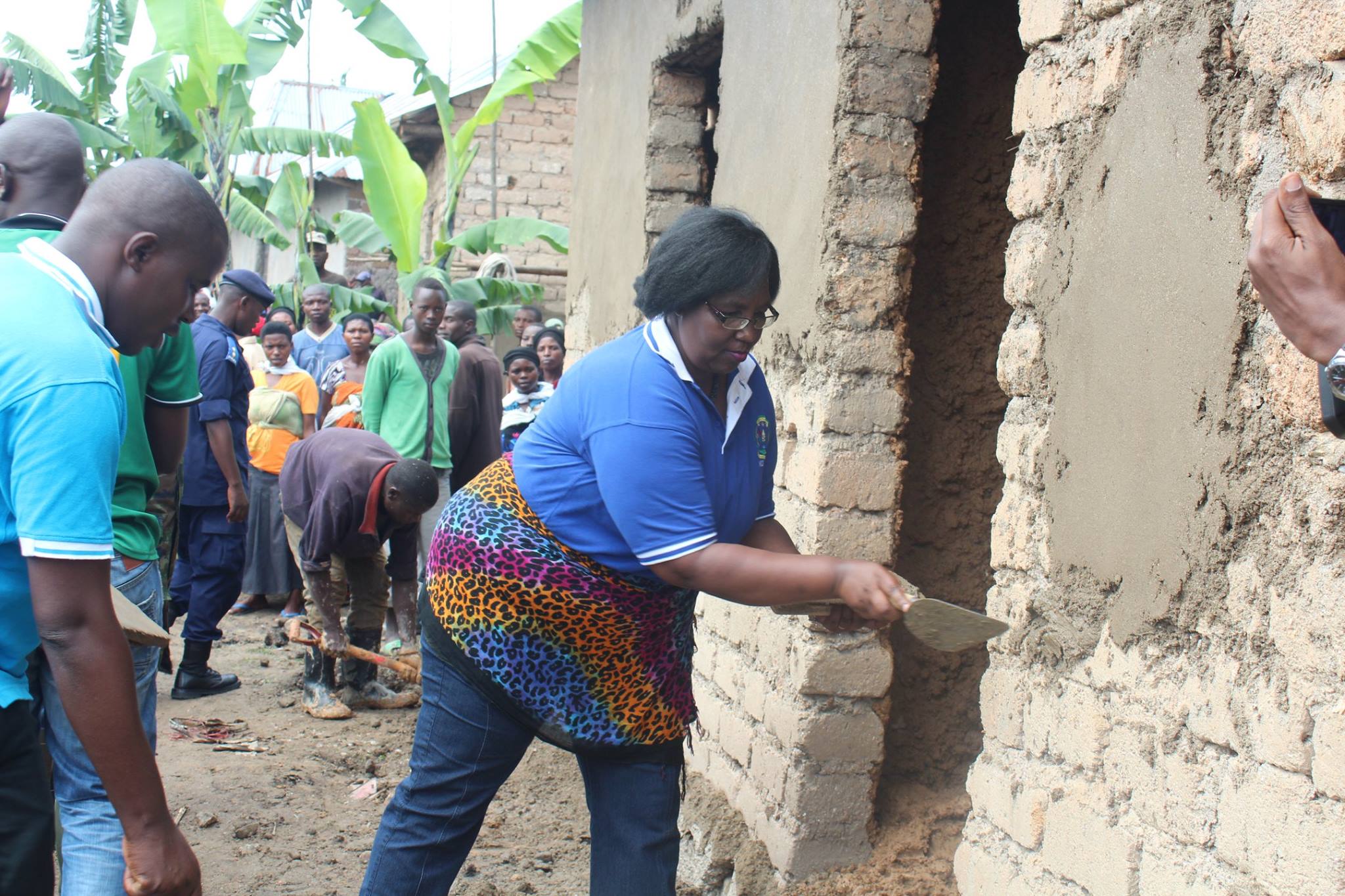
The Rwanda government, through its Ministry of Disaster and Refugee Affairs (MIDIMAR), is to build a `Disaster Resilience Village’ to be used as a safe haven by communities at risk, writes Susan Babijja.
Preparations for the disaster resilience village are in progress in Ngororero district, Mityazo sector, Kigali Hill.
The village is estimated to cost over Rwf 2.2 billion and will comprise 25 four in one housing units, with each house offering accommodation four families, according to the district Mayor Godefroid Ndayambaje. He said construction of the houses is planned to be completed in June 2017.
About 20,580 families in the country need to be relocated from high risk zones, of which 19,000 have been identified to have the capacity of getting shelter elsewhere while others will need help.
Rwanda suffers five major hazards including draught, landslides, floods, earthquakes and windstorm. The government always advises people to relocate to safer zones as a measure of disaster risk management. Vulnerable people living in risk-prone zones will be supported by the government to relocate to safer places.
Despite these efforts several people have died and property has been destroyed in several disasters, according to the Disaster ministry whose mandate id to lead in formulation, coordination, control, and direct management of disasters. It also leads in management, supervision of the humanitarian assistance in emergency situations and mobilisation of appropriate resources. MIDIMAR also is involved in promoting disaster awareness culture and timely handling of Rwandan and foreign refugee affairs. It also tackles disaster challenges at all levels.
The government through MIDIMAR also plans to devise simple ways of constructing houses for people left homeless due to disasters
The latest call was made during the International Disaster Risk Reduction Week that was launched in Ngororero district.
The International Day for Disaster Reduction (IDDR) held every October 13 encourages every citizen and government to take part in building more disaster resilient communities and nations.
The date set aside by the United Nations General Assembly in 1989, celebrates how people and communities around work to reduce their exposure to disasters and raising awareness about the importance persisting in the risky that they face.
This year’s International Week for Disaster Risk Reduction focused on relocation of vulnerable people from high risk zones because of the disasters that struck the country during the last rain season of Itumba.
Marked under the theme, “prevent disasters by settling in safer zones” the Minister Seraphine Mukantabana told residents of Ngororero District that it was much cheaper to invest in preparedness and disaster risk reduction than in response.
“People should not wait for disasters to occur then act, but to take disaster risk reduction seriously. It reduces on losses of lives and property,” she said.
The minister was speaking after a special Umuganda (community service) that was held to mark the International Day for Disaster Risk Reduction.
She said that from January to September 2016, 166 lives were lost due to disasters, 136 were injured and 5,388 hectares of crops and 4,611 houses were destroyed.
During the same period, 26 roads and 41 bridges were destroyed. Ngororero district was most affected with disasters that are estimated to have cost RWf 27 billion.
The Minister urged residents to construct disaster resilient houses and improved drainage systems that would ease water flow into the right channels.
“It is every ones responsibility to protect disasters and also save others in disaster risk areas,” she said, “Disaster prevention doesn’t require high scientific knowledge. You have to apply the indigenous knowledge to prevent disaster like constructing houses whose roofs and walls resist winds, water harvesting from houses, and other good practices that contribute to disaster prevention.”
She explained that the government cannot have an adequate budget for disasters because they sometimes occur on a large scale. She, however, assured them that every Rwandan should know that the government is ready to come to their rescue.
She said the Disaster budget supports timely consistent and coordinated response to anticipated floods and landslides and minimizing their impact on human population, livelihoods, lifelines, properties, and the environment.
She also urged residents who have indigenous knowledge in predicting weather changes or other phenomena to share their knowledge with MIDIMAR and relevant institutions in order to contribute to research and other studies.
Of recent, the Ministry set up a team with rescue materials such as temporary shelters in areas most prone to disaster and also announced a new drive to integrate local and indigenous knowledge with science and technology in an effort to increase disaster resilience. The ministry says preparations are still underway ahead of predicted heavy rains.
“We are preparing by identifying rivers and areas that are prone to flooding. We are also considering alternative means of transport if some bridges collapse,” she said.
Research has been carried out after the occurrence of disasters in Gakenke, Ngororero, Nyabihu, Rubavu, Muhanga,Nyanza, Ruhango,Nyarugenge,Gasabo, Nyagatare, Kayonza, Gatsibo and Musanze districts. The research was to establish the number of people who were still in risky zones and those who were relocated. The survey is ongoing.
The national risk Atlas released last year estimates that hazards, if they all occur, can inflict a combined economic loss of $132 million which is almost equal to the $120 million government allocated to agriculture sector in the 2014/2015 budget.
 The Independent Uganda: You get the Truth we Pay the Price
The Independent Uganda: You get the Truth we Pay the Price


